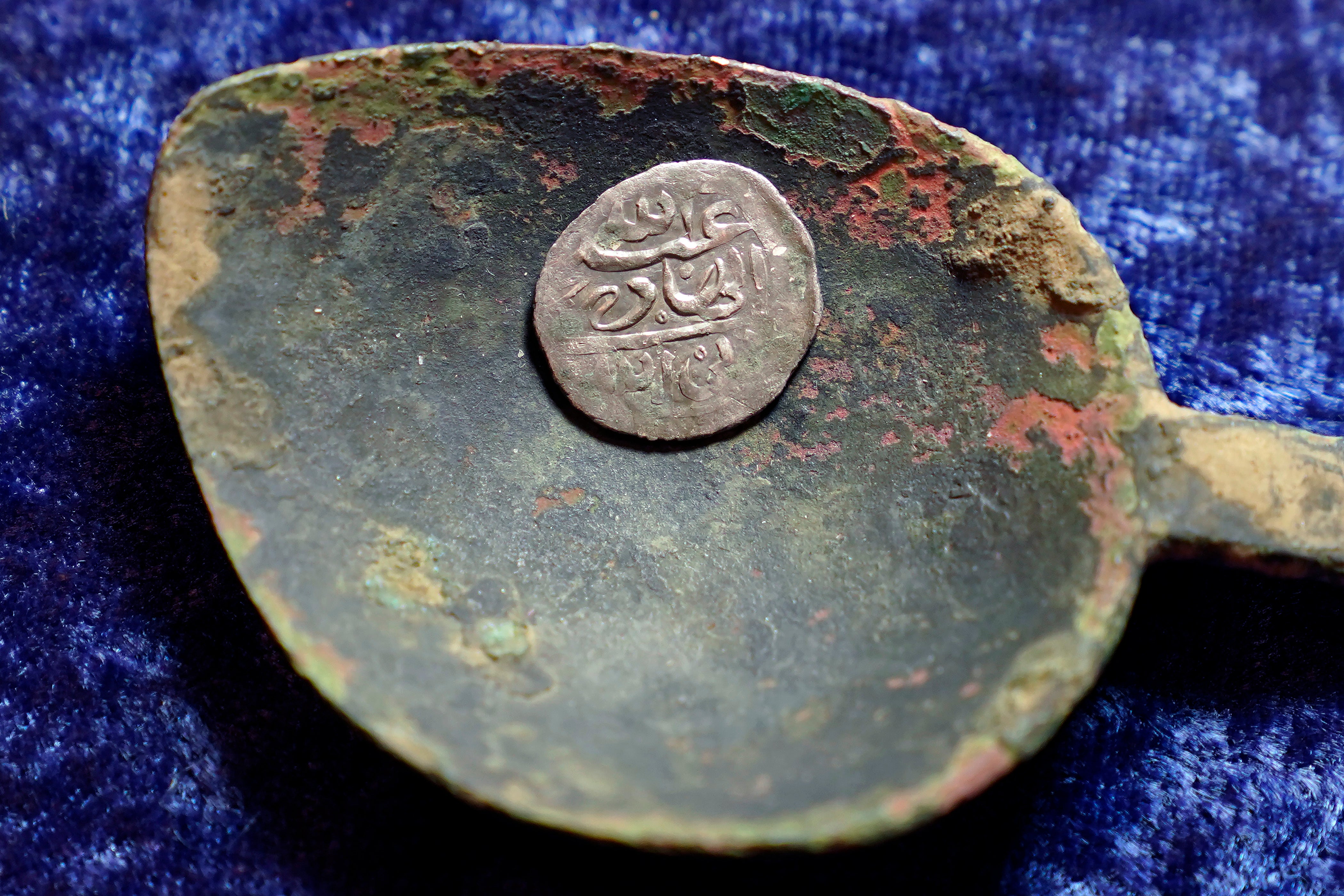Arabian coins found in Rhode Island may solve pirate mystery
Coin was stolen from Muslim pilgrims in 1695 raid by Henry Every

Your support helps us to tell the story
From reproductive rights to climate change to Big Tech, The Independent is on the ground when the story is developing. Whether it's investigating the financials of Elon Musk's pro-Trump PAC or producing our latest documentary, 'The A Word', which shines a light on the American women fighting for reproductive rights, we know how important it is to parse out the facts from the messaging.
At such a critical moment in US history, we need reporters on the ground. Your donation allows us to keep sending journalists to speak to both sides of the story.
The Independent is trusted by Americans across the entire political spectrum. And unlike many other quality news outlets, we choose not to lock Americans out of our reporting and analysis with paywalls. We believe quality journalism should be available to everyone, paid for by those who can afford it.
Your support makes all the difference.A few Arabian coins unearthed in a Rhode Island fruit orchard may have solved a cold case dating back to the 1600s.
The coins are among the oldest ever found in the United States and were discovered by an amateur historian and metal detector enthusiast.
And they could finally explain the disappearance of English pirate captain Henry Every.
“It’s a new history of a nearly perfect crime,” said Jim Bailey, who found some of the coins.
Every became the world’s most wanted man in 1695 when his ship, the Fancy, attacked and raided a boat carrying Muslim pilgrims home to India from Mecca, Saudi Arabia.
Read more:
- George Floyd news live: Derek Chauvin trial to resume
- Teacher’s ‘racist zoom rant’ overheard by student’s family after she forgets to end call
- Friend in car with George Floyd will refuse to testify
- Seven-year-old boy charged with rape, report says
- Alabama fails to reverse ban on yoga as conservatives say they fear rise in Hinduism
The Ganj-i-Sawai was a royal vessel owned by the Indian emperor Aurangzeb, then one of the world’s most powerful men, and it was carrying tens of millions of dollars worth of gold and silver.
After murdering the crew and raping the women onboard, Every and his crew escaped to the Bahamas with a large bounty placed on their heads by King William III.
Until the find historians only knew for certain that Every sailed to Ireland in 1696, but Mr Bailey says that the coins are proof that the hunted pirate and his crew eventually made their way to New England
Mr Bailey unearthed the first coin, which was minted in Yemen in 1693, back in 2014 and now he and other enthusiasts have found 15 more.
Ten of those coins were discovered in Massachusetts, three in Rhode Island, and two in Connecticut.
Another coin was also found in North Carolina, where the crew are believed to have come ashore.
“It seems like some of his crew were able to settle in New England and integrate,” said Sarah Sportman, the state archaeologist for Connecticut.
“It was almost like a money laundering scheme.”
The Associated Press contributed to this report.
Join our commenting forum
Join thought-provoking conversations, follow other Independent readers and see their replies
Comments